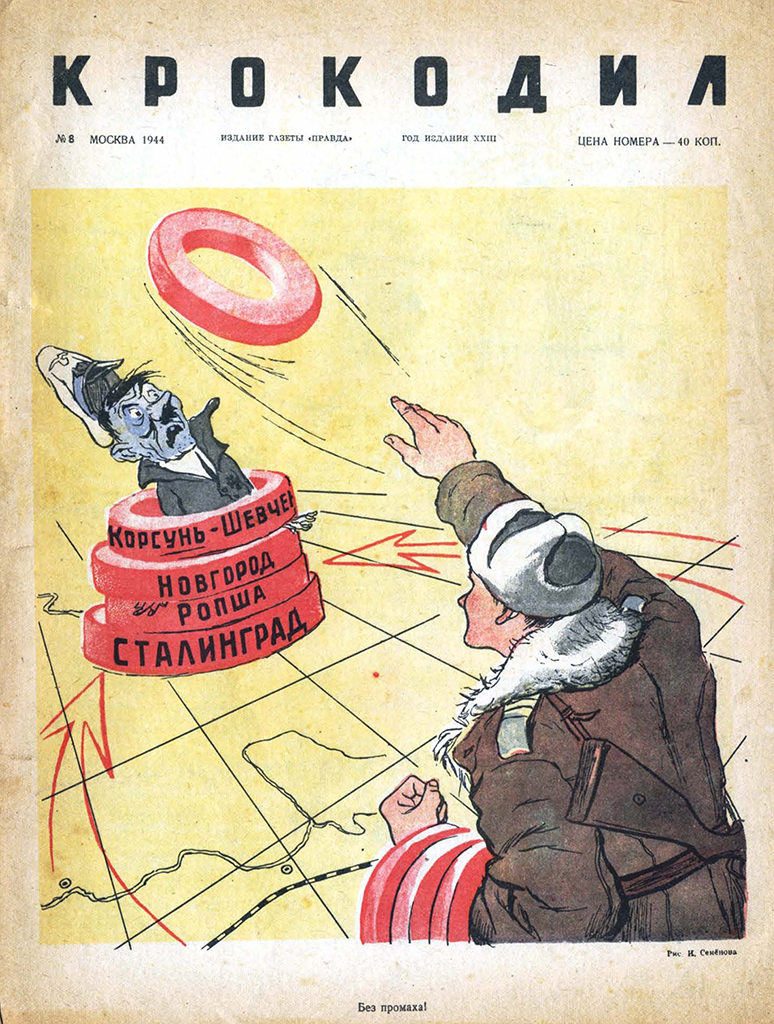Krokodil Digital Archive
The leading satirical publication of the Soviet Era
Krokodil (Crocodile) was a satirical magazine published in the Soviet Union. It was first published as the illustrated Sunday supplement for Rabochii (The Worker) newspaper on June 4, 1922. As circulation increased, the editors became convinced of the need for a regular independently numbered journal, and Krokodil No.1 (13) was published for the first time on August 27, 1922. Bursting from its front cover was a snarling red crocodile, an avatar that has symbolized the journal and its brand of political satire ever since.
Published continuously until 2008, circulation of Krokodil peaked at around 5.8 million (in 1980) and it was firmly established as one of the leading publications in the Soviet Union. Krokodil lampooned religion, alcoholism, foreign political figures and events. It ridiculed bureaucracy and excessive centralized control. The caricatures found in Krokodil can be studied as a gauge of the ‘correct party line’ of the time. During the height of the Cold War, cartoons criticizing Uncle Sam, the Pentagon, Western colonialism and German militarism were common in the pages of Krokodil.
